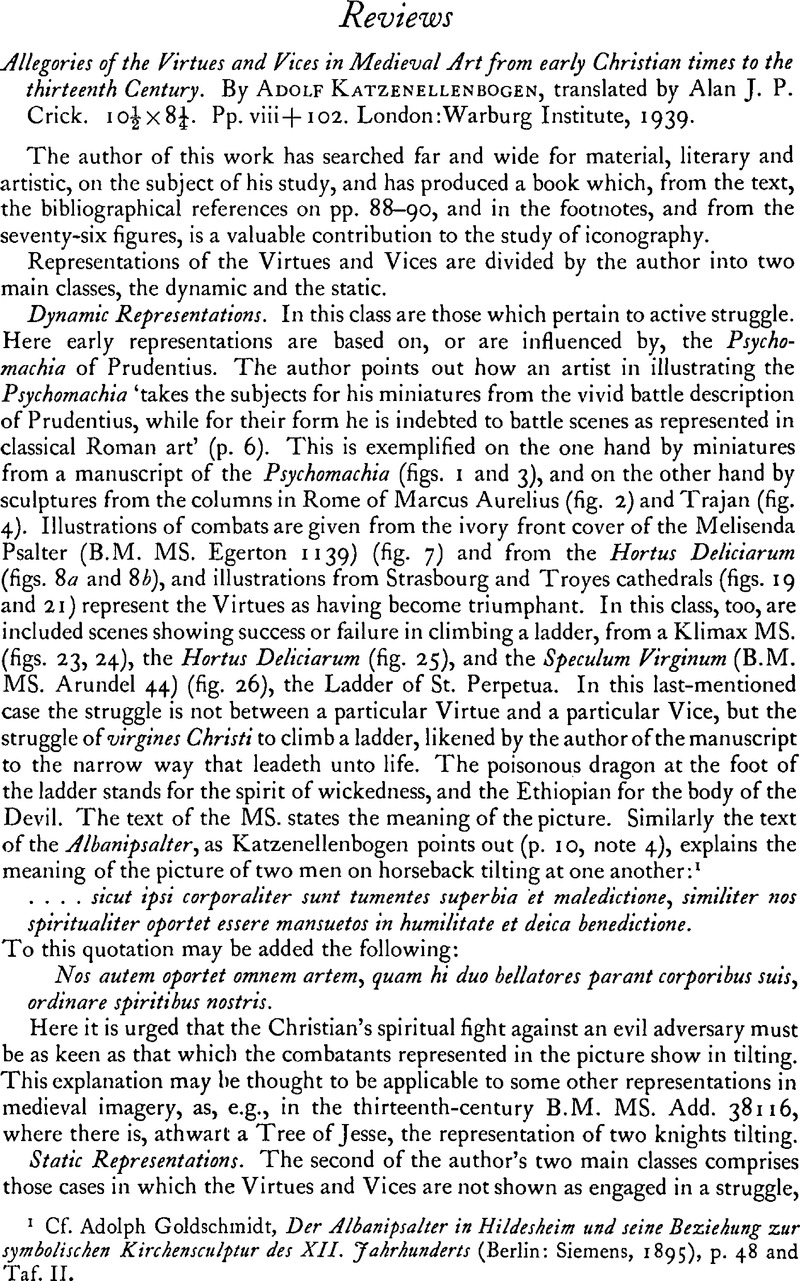No CrossRef data available.
Article contents
Allegories of the Virtues and Vices in Medieval Art from early Christian times to the thirteenth Century. By Adolf Katzenellenbogen, translated by Alan J. P. Crick. 10½ ×8¼. Pp. viii + 102. London: Warburg Institute, 1939.
Published online by Cambridge University Press: 08 January 2012
Abstract

- Type
- Reviews
- Information
- Copyright
- Copyright © The Society of Antiquaries of London 1942
References
page 223 note 1 Cf. Goldschmidt, Adolph, Der Albanipsalter in Hildesheim und seine Beziehung zur symbolischen Kirchensculptur des XII. Jahrhunderts (Berlin: Siemens, 1895), p. 48 and Taf. II.Google Scholar
page 224 note 1 Not on the Virtues, as the author states (p. 38).
page 224 note 2 Cf. Traver, Hope, The Four Daughters of God, Bryn Mawr College Monographs, vol. vi (1907). Katzenellenbogen says (p. 40) that ‘When the artists seized upon this theme, they followed the text and depicted two pairs of virginṣ embracing and kissing each other’; but it is only Justitia and Pax who osculatae sunt.Google Scholar
page 225 note 1 This order of the Vices, it appears, existed in the thirteenth century, and was such that the initials of the names formed a sort of word as a mnemonic, S, A, L, I, G, I, A. Cf. Zoeckler, Otto, Das Lehrstück von den sieben Hauptsünden (Munich, 1893Google Scholar) and Die Tugendlehre des Christentums (Gütersloh, 1904). And it may be of interest to note that in the current Roman Catholic Catechism in English there remains the trace of the saligia mnemonic.Google Scholar
page 225 note 2 Not those of the generally recognized septenary.


